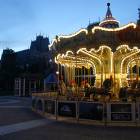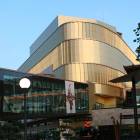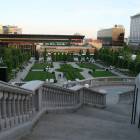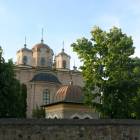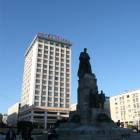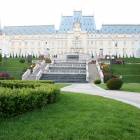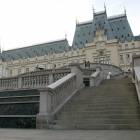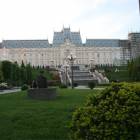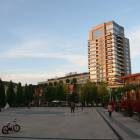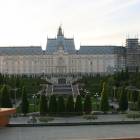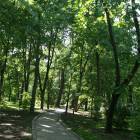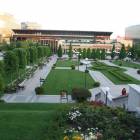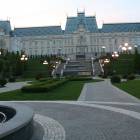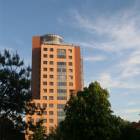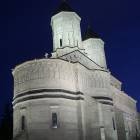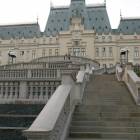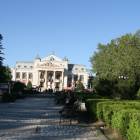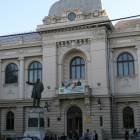Iași, the city with one of the finest architecture in Romania
Iași is the second largest city of Romania, nearing 400.000 people and even surpassing half of million when including the metropolitan area. Over 56.000 of them are the students of the six universities in town. And almost as young are the employees of numerous IT corporations present, that make the economy dynamic and the area vibrant. The largest of them is the development center of Amazon, followed by numerous outsourcing companies, but Oracle, Microsoft, IBM are also present.
But Iași has plenty of history behind, for which the buildings bare witness. The princes of Moldova had royal palaces here at least from the 1400s and in the middle of XVI century the capital was relocated here from Suceava. So for three centuries Iași functioned as capital of the entire Moldova. Which is not to be mistaken with the current republic of Moldova, just a small piece of historic Moldova. It meant roughly everything east of Carpathian mountains (a vertical line straight through the middle of today’s Romania) and all the way to Dnister river, the Danube Delta. So it included Bukovina (partly in Ukraine now) and had sea access in its best days.
We would have had even more to see if the city wasn’t destroyed many times by various migratory tribes or by Tatars, Cossaks, Poles, Turks. In 1859, the unification with mainland Romania (Wallachia) was simultaneously voted here and in Bucharest. So Iași had to relinquish the title of capital city, though for a while the unification was done only by electing the same ruler in the two provinces. And colonel Alexandru Ioan Cuza had the governing palace here.
For a short while, during world war one, Iași became the capital of Romania. But it was under tragic circumstances when Bucharest was conquered by Central powers (Germany and Bulgaria) and the administration (including king Ferdinand) took refuge in Iași. We can still see the building used by Ferdinand and Cuza before. It is called the Unification Museum and stands out with its balcony with six sculpted caryatides.
The landmark building of Iași is the Palace of Culture, a Neo-gothic building erected between 1906 and 1925, benefiting from elegant gardens in front as well. The architect is one of the best Romanian architects, Ion Berindey, who was educated in Paris at the Beaux Arts (fine art university).
The building with 298 chambers can be considered Berindey’s masterpiece, who also created Enescu Museum in Bucharest, the Astronomic Observatory and numerous valuable mansions in the capital in a style blending French 17 century with Neo-Romanian architecture. (A reinterpretation of traditional peasant architecture developed for boyars of the modern age.)
Since early communist times, the palace was shifted from a tribunal to museum. It now houses four museums and other institutions, including: Art Museum, History Museum, Ethnography Museum and another for Science and Technique. The historic collection goes as far back as paleolithic, including ceramic since bronze age from famous local cultures like Cucuteni, Monteoru and the later time of ancient Dacia.
Old and new are shaking hands in this elegant palace. One hall is decorated with wainscot designed by Henri Coandă, the pioneer of aviation. And across the gardens there is one of the largest shopping malls, Iulius Mall. In fact, from the large terrace of this mall you can get some of the bet views of the palace. While also having a large selection of fast food restaurants in one giant opening, satisfying every taste from Chinese to American or Italian cuisine.
On the main pedestrian boulevard, named after the sanctified king Stephen the Great, you can encounter several valuable landmarks of the city. The most important of them is the monastery Trei Ierarhi. The name refers to the three Byzantine hierarchs, regarded among the most important fathers of the Orthodox Church: saints Basil the Great, Gregory the Theologian (of Nazians) and John Chrysostome.
The church displays marvelous sculpted stone facade with jewelry like details. It was commissioned by Vasile Lupu, the Moldovan king who dominated the Orthodox world after the fall of Constantinople. He took under his wing the Patriarchate of Constantinople, for which he even patronized a great synod, and also bestowed his generosity over Mount Athos and monasteries in the Holy Land.
This boulevard is like an open air museum, with numerous important constructions, including the neo-classical town hall, designed by Gustav Freywald and a metropolitan palace. But one should not miss the National Theater, finished just years before the end of the XIX century with plans by architects Fellmer and Helner from Vienna.
Iași had the first national theater in the country and also other notable premiers: the first Romanian university, the first natural history museum, the first public monument, the first newspaper, the first engineering school, the first musical in Romanian, the first botanical garden and even the first Jewish theater in the world.
Mai multe despre: Architecture, Romania • Architecture • cities • Iasi • Ion Berindey • Moldova • Neo-Gothic • Romania- Home Page
start page - Architecture
landmark buildings - Sacred architecture
places of worship - Nature
landscape photography - Concert
performing artists - Christmas
Santa Claus pictures
- Jooble
jobs for photographers - Escape
an out of control blog - Merry Christmas
The best organizer of Christmas parties - Astro photo
Eclipse hunting and astrological photography





